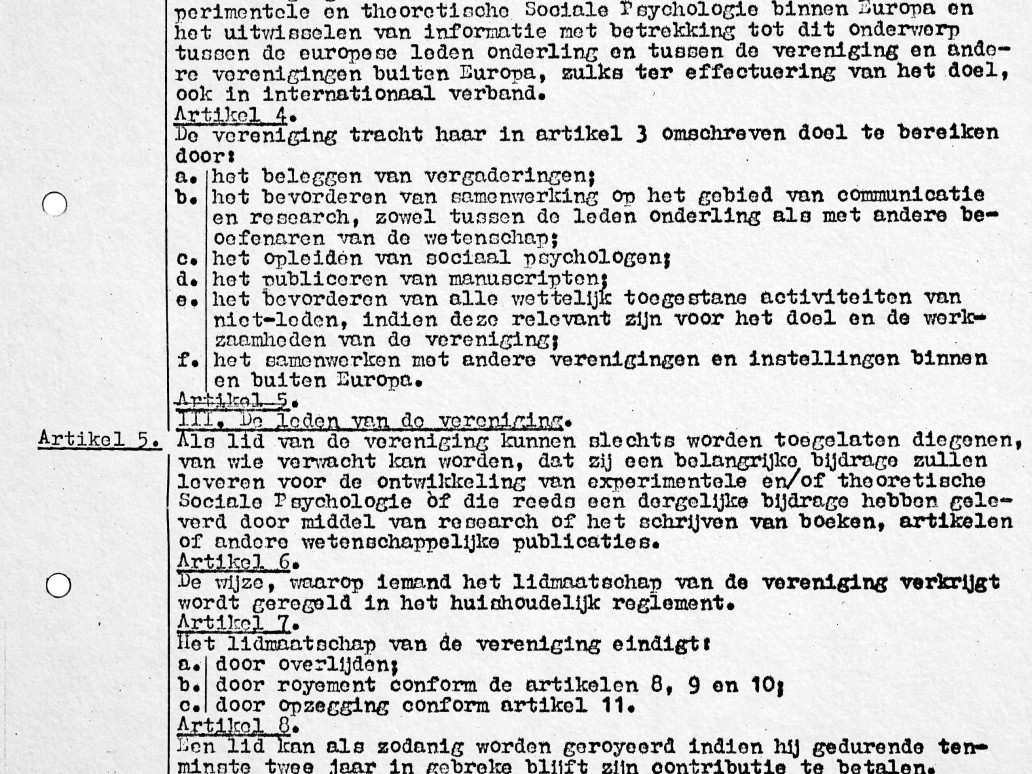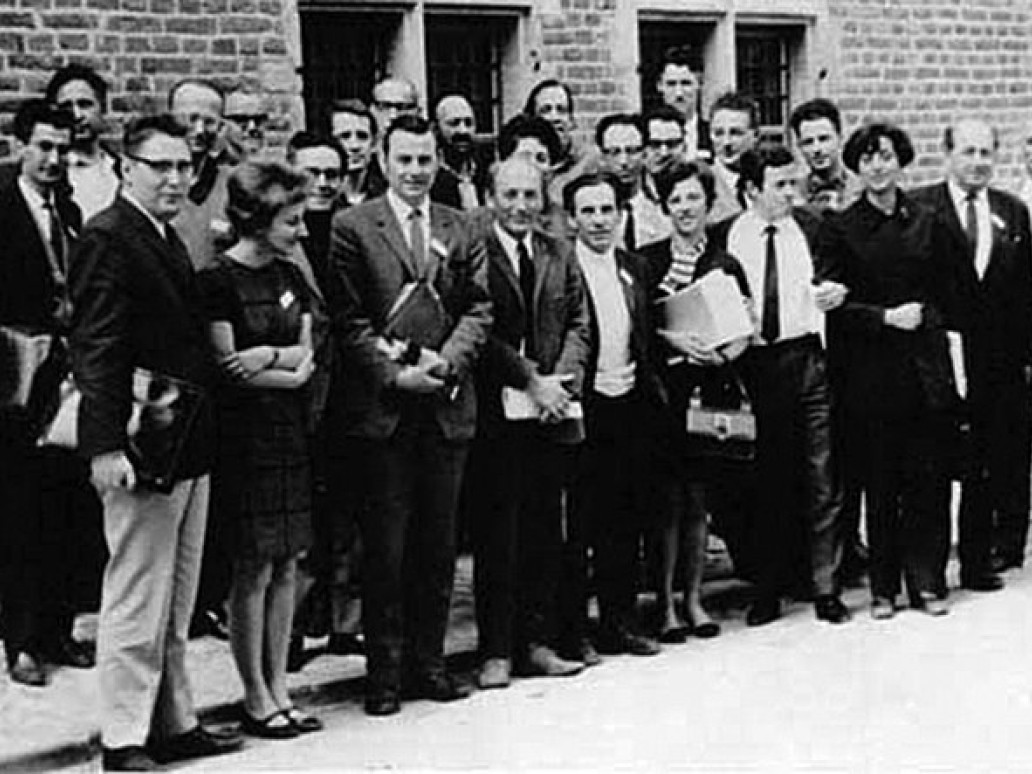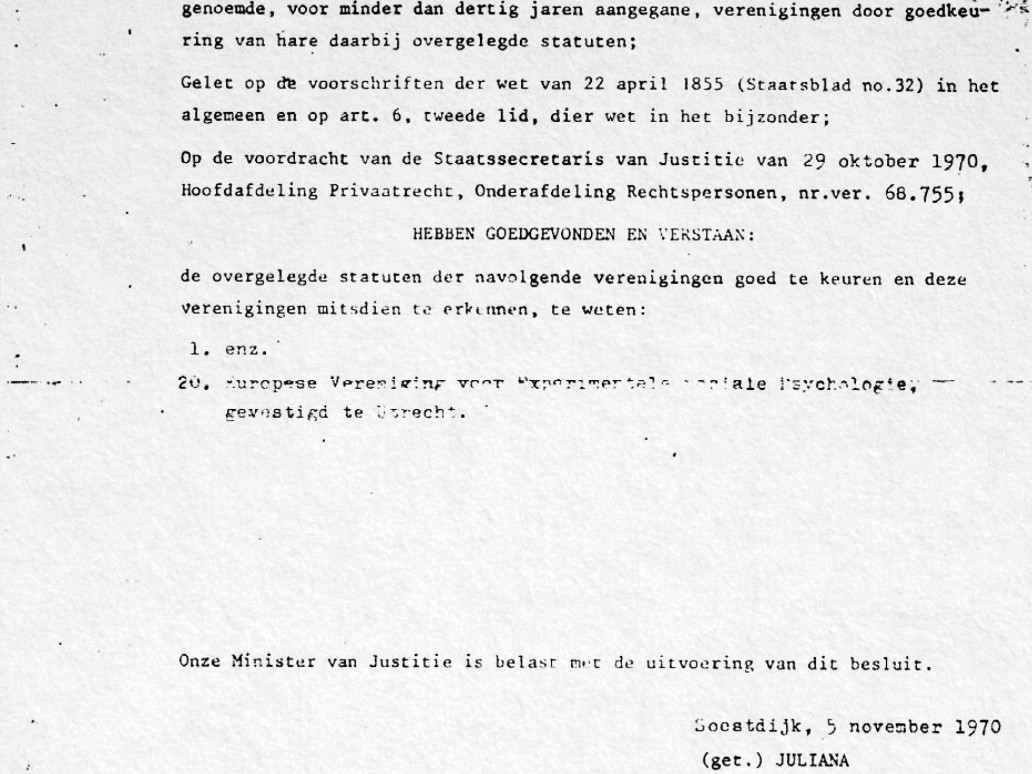Formalising the Association
Articles and Standing Orders
As said earlier, during the business meeting of the Royaumont Conference the first Executive Committee was asked to prepare the bylaws of the newly formed Association in the form of Articles and Standing Orders. The task was as signed to an ad hoc committee consisting of two members of the Executive Committee and five ‘ordinary’ members of the Association. Inspired by an example from the International Association of Applied Psychology, this committee began to write the first drafts of the Articles and Standing Orders in 1967. As an anecdote, one of the first drafts implied that there would be three kinds of members: ‘ordinary’ members, honorary members, and a special category of patrons. Honorary membership would be conferred upon persons who in the opinion of the regular members had distinguished themselves through international contributions to the development of social psychology. Patrons were persons or bodies who contributed financially to the Association on a yearly basis.
Following discussions and revisions, the final version of these bylaws was voted on by the members of the Association, article by article, during the General Meeting of 1969 (Leuven). To establish the legal existence of the Association the approved text, translated in Dutch, was submitted to the Official Registration Office of the Netherlands. A ‘Koninklijk Besluit’ (a Royal decree), signed by the then Dutch Queen Juliana, and dated November 5th, 1970, completed the official approval of the Association’s bylaws. Utrecht, the home of Jaap Rabbie, then a member of the Executive Committee, became the official seat of the Association.



In view of the above, one could argue about the actual ‘birthday’ of the Association. Depending on the criterion used, it can be almost any year between 1966 and 1970. In 1966, EAESP was created ‘internally’, the bylaws were written in 1967, the final version was approved by the members in 1969, and via a Dutch Royal Decree the Association became a recognized legal entity in 1970. The original Articles and Standing Orders of EAESP have a structure comparable to that of similar organizations. The Articles describe the purpose of the Association, the way membership is regulated, the structure and functioning of the Executive and other committees, the rules governing the General Meetings, the handling of finances, and the like. The Standing Orders, at the time consisting of a very limited number of clauses, related mainly to daily management issues, such as the procedures for the admission of new members and for the election of members of the Executive Committee.
Leaving the more technical aspects of the Articles aside, in terms of substance, Articles 3 and 4 are the most important as they describe the goals of the Association and the means to reach them. Article 3 of the original set of articles reads as follows: “The purpose and objects of the Association are the promotion and development of experimental and theoretical social psychology within Europe, and the interchange of information relating to this subject between the European members and other Associations throughout the world towards an international achievement of these objects and purposes.”
Article 4 then lists the means to achieve these goals: The organization of meetings, the promotion of mutual scientific communication and research cooperation between members and between members and other scientists, the training of social psychologists, the publication of manuscripts, and finally cooperation with other associations and institutions within and outside Europe.
Of course, over the years, a number of the Articles and Standing Orders have undergone changes, as a result of changing views and/or practices. Some of these will be described in a different article. Suffice it now to observe that, comparing the original 1969 bylaws with those of 2017, the core of the Articles still stands. As such they testify to the wisdom of the founders of the Association and its early membership.
